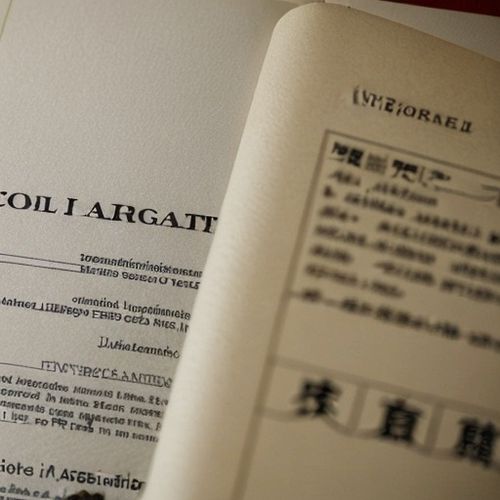The concept of no-fault divorce has reshaped the landscape of marital dissolution in the United States, offering couples a less adversarial path to ending their unions. Unlike traditional divorce proceedings, which required one party to prove wrongdoing such as adultery or abandonment, no-fault divorce allows either spouse to file for divorce without assigning blame. This legal shift, which began in the late 20th century, has had profound implications for families, courts, and society at large.
No-fault divorce laws emerged as a response to the growing recognition that forcing couples to air their grievances in court often exacerbated conflict and prolonged emotional distress. California became the first state to adopt no-fault divorce in 1969, with other states gradually following suit. By the 1980s, the majority of states had implemented some form of no-fault provision, and today, it is the standard across the nation. The primary rationale behind this legal evolution was to reduce the acrimony associated with divorce and to streamline the legal process.
The mechanics of no-fault divorce are relatively straightforward. In most states, a spouse need only cite "irreconcilable differences" or a similar generic reason to initiate proceedings. This eliminates the need for painful courtroom battles over who is at fault, allowing couples to focus on practical matters such as asset division, child custody, and spousal support. Critics, however, argue that no-fault divorce has made marriage less stable by making it too easy to walk away from marital commitments.
One of the most significant impacts of no-fault divorce has been on gender dynamics. Historically, women often found themselves at a disadvantage in fault-based divorce systems, particularly if they lacked the resources to prove their husband's misconduct. No-fault divorce has leveled the playing field, empowering women to initiate divorces without fear of retaliation or financial ruin. Studies have shown that women are now more likely to file for divorce than men, a stark contrast to the pre-no-fault era.
Child custody arrangements have also been influenced by the rise of no-fault divorce. With less emphasis on assigning blame, courts have been able to focus more on the best interests of the children when determining custody. Joint custody has become more common, reflecting a societal shift toward shared parenting responsibilities. However, some argue that no-fault divorce has inadvertently led to a decline in child support enforcement, as the process can sometimes prioritize speed over thorough financial scrutiny.
The economic ramifications of no-fault divorce are complex and multifaceted. On one hand, it has allowed couples to dissolve marriages more efficiently, potentially reducing legal fees and court costs. On the other hand, some research suggests that no-fault divorce has contributed to an increase in single-parent households, which often face greater financial instability. The debate over whether no-fault divorce has been a net positive or negative for economic equality remains unresolved.
Religious and cultural conservatives have been among the most vocal opponents of no-fault divorce, viewing it as a threat to the institution of marriage. They argue that by removing the consequences for breaking marital vows, no-fault divorce has eroded the social and moral fabric of society. Some states have even considered rolling back no-fault provisions, though such efforts have gained little traction. Proponents, meanwhile, maintain that no-fault divorce respects individual autonomy and acknowledges that not all marriages can or should be saved.
As society continues to evolve, so too does the conversation around no-fault divorce. Recent decades have seen growing interest in alternative dispute resolution methods, such as mediation and collaborative divorce, which align with the no-fault philosophy of minimizing conflict. These approaches often result in more amicable separations and can be particularly beneficial for couples with children. The legal system's embrace of these methods suggests that the principles underlying no-fault divorce are here to stay.
Looking ahead, the future of no-fault divorce may involve further refinements to address some of its unintended consequences. Policymakers are increasingly focused on ensuring that the dissolution of marriage does not leave either party—particularly the economically disadvantaged spouse—in financial peril. Some have proposed mandatory financial counseling or cooling-off periods to give couples more time to consider reconciliation. These potential reforms aim to preserve the benefits of no-fault divorce while mitigating its drawbacks.
Ultimately, no-fault divorce represents a significant milestone in the ongoing effort to balance individual rights with societal interests. It has provided millions of Americans with a more humane way to end unhappy marriages, but it has also sparked important questions about the nature of commitment and the role of the state in personal relationships. As with any major social change, the full implications of no-fault divorce may take generations to fully understand.

By /Jun 17, 2025

By /Jun 17, 2025

By /Jun 17, 2025

By /Jun 17, 2025

By /Jun 17, 2025

By /Jun 17, 2025

By /Jun 17, 2025

By /Jun 17, 2025

By Sophia Lewis/Apr 19, 2025

By Elizabeth Taylor/Apr 19, 2025

By James Moore/Apr 19, 2025

By Rebecca Stewart/Apr 19, 2025

By Ryan Martin/Apr 19, 2025

By James Moore/Apr 19, 2025

By Sarah Davis/Apr 19, 2025

By George Bailey/Apr 19, 2025

By James Moore/Apr 19, 2025

By Amanda Phillips/Apr 19, 2025